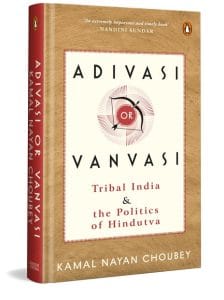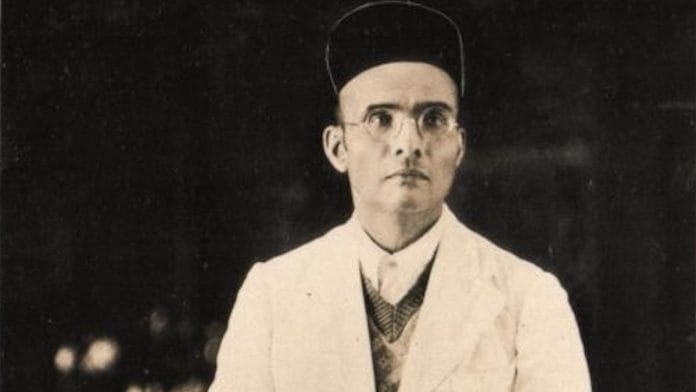There are different kinds of analyses regarding the historical background of the emergence of the Hindu right wing, particularly the RSS in India. Scholars like Walter K. Anderson, Sridhar Damle, Bruce Graham, Thomas Bloom Hansen and Christophe Jaffrelot, posit the beginning of Hindutva politics in the 1920s. Other scholars like Partha Chatterjee, Vinay Lal, Ashis Nandy and Tapan Roychaudhuri underline that religious politics emerged as an integral part of nineteen century modern nationalist identity and blossomed in the first half of the twentieth century.
It is important to note that scholars like Jyotirmay Sharma have differentiated between the ‘soft and hard version’ of Hindutva. He includes thinkers like Dayanand Saraswati and Swami Vivekananda in the former category, and V.D. Savarkar and M.S. Golwalkar, in the latter.4 A. Raghuramraju, on the other hand, questioned this kind of classification and tendency to link social reformers with the idea of Hindutva. It is true that Vivekananda and Dayanand Saraswati advocated Indian traditions and used them to criticize superstitions and belief systems of the time but they used Hinduism, rather than Hindutva, to propagate their ideas of humanism. The basic idea behind this argument is that Hindutva started with the writings of Savarkar who differentiated between Hinduism and Hindutva.
It is also true that during the nineteenth century, a new middle class emerged in India, which initiated religious reform movements in the country. Many Hindu reformers underlined that the lack of unity in the religion made it vulnerable and they began to consider a version of modernity with ‘indigenous’ (Hindu Brahminical) roots. The Arya Samaj established by Dayanand Saraswati and the ‘Sanatana Dharma Sabha’ started the cow protection movement. In 1882, Dayanand Saraswati formed the first ‘Gaurakshini Sabha’ (Cow Protection Organization) in Punjab. It later grew in many urban centres and the cow became a symbol of unification.6 It also enhanced the view, which considered Muslims and Christians as outsiders, while cow-worshipping Hindus were glorified as the original inhabitants of India. It could be argued this was the inception of religious nationalism in India.
For Aurobindo and Bankim Chandra Chatterjee, Hindu religious values were located at the centre of their idea of nationalism. For Aurobindo, nationalism was a religion and he emphasized that ‘Indians were weak and unmanly and therefore required the “Kshatriya” impulse; they had grown feeble and had to appropriate the “shakti” of science.’ Bankim wrote ‘Bande Matram’, which became the most important slogan of the Indian freedom struggle. In his three historical novels—Anandmath, Devi Chaudhurani and Sitaram—he presented the theme of Hindu–Muslim antagonism. These thinkers focused on Hindu traditions and values to develop their notion of nationalism. Most of them also vociferously criticized the negative aspects of Hindu society and only Bankim (in his later writings) presented a clear picture of the antagonism between Hindus and Muslims. Since they emphatically focussed on Hindu values, they became the icon of Hindutva politics, which emerged more systematically through the writings of Vinayak Damodar Savarkar and the formation of the RSS.
Savarkar (1883–1966) presented a systematic idea of Hindutva in his book Hindutva: Who is a Hindu, first published in 1923. He differentiated between Hinduism and Hindutva.
He argued that he coined the word Hindutva to describe the political philosophy of the Hindu people, and Hinduism was only one aspect of Hindutva. The term Hinduism excluded other religions of the land of Saptasindhu (the land of the seven rivers)—Buddhism, Jainism and Sikhism. At the beginning of Hindutva: Who is a Hindu, Savarkar defines a Hindu as a, …person who regards this land of BHARATVARSHA, from the Indus to the Seas of his Father-Land as well as his Holy-Land that is the cradle land of his religion. To the converted Christians and Muslims, the Hindustan is the Fatherland as to any other Hindu. Yet it is not to them a ‘Holy Land’ too. Their holy land is in Arabia or Palestine. Their mythology and Godmen, ideas, and heroes are not the children of this soil. Their names and outlooks smack of a foreign origin, so their love is divided.
Savarkar most explicitly presented the notion of Hindutva and created ‘otherness’ for the followers of Islam and Christianity. The members of both communities are outside the boundaries of the ‘Hindu nation’ and Savarkar primarily focused on the antagonistic relations between Hindus and Muslims locked in a life-and-death battle for centuries. He cherished a nationalism based on the Hindu religion and the Hindu culture. As a propagator of Hindutva ideology, Savarkar underlines concerns about the impossibility of the coexistence of Hindus and Muslims. He accused Indian Muslims of being anti-Hindu and anti-India, with extraterritorial allegiance.
Dr Keshav Baliram Hedgewar (1889–1940), who was an admirer of Sarvarkar’s ideas, established the RSS in 1925, with the help of many like-minded people, including Savarkar’s brother. The aim was to establish an organization to work for the awakening of Hindus for their religious interest and to serve the motherland. Indeed, like Savarkar, Hedgewar was also against the Gandhian idea of non-violence and felt that Gandhi’s ideas were making Hindus weak and they benefitted Muslims. As a Congress worker, Hedgewar participated in the Non-cooperation Movement but felt cheated when Gandhi called it off after the Chauri Chaura incident of February 1922.13 Further, the Moplah riots and other communal incidents affected him and he realized that to protect the interests of the Hindus, a separate organization was necessary.
Savarkar’s ideas influenced Hedgewar, but he was very cautious about protecting the structure of the RSS. Hence, as RSS chief (sarsanghchalak), he never participated in any activity, which could create suspicion in the minds of the colonial rulers about the work of the RSS. Even when he participated in the Civil Disobedience Movement and went to jail, he handed over the responsibility of the sarsanghchalak to another swayamsevak (volunteer). It is noteworthy that Savarkar severely criticized the RSS for its ‘purely cultural’ orientation. He publicly stated that ‘[t]he epitaph for the RSS volunteer will be that he was born, he joined the RSS and he died without accomplishing anything.’

This excerpt from Kamal Nayan Choubey’s ‘Adivasi or Vanvasi: Tribal India and the Politics of Hindutva’ has been published with permission from Penguin Random House India.






